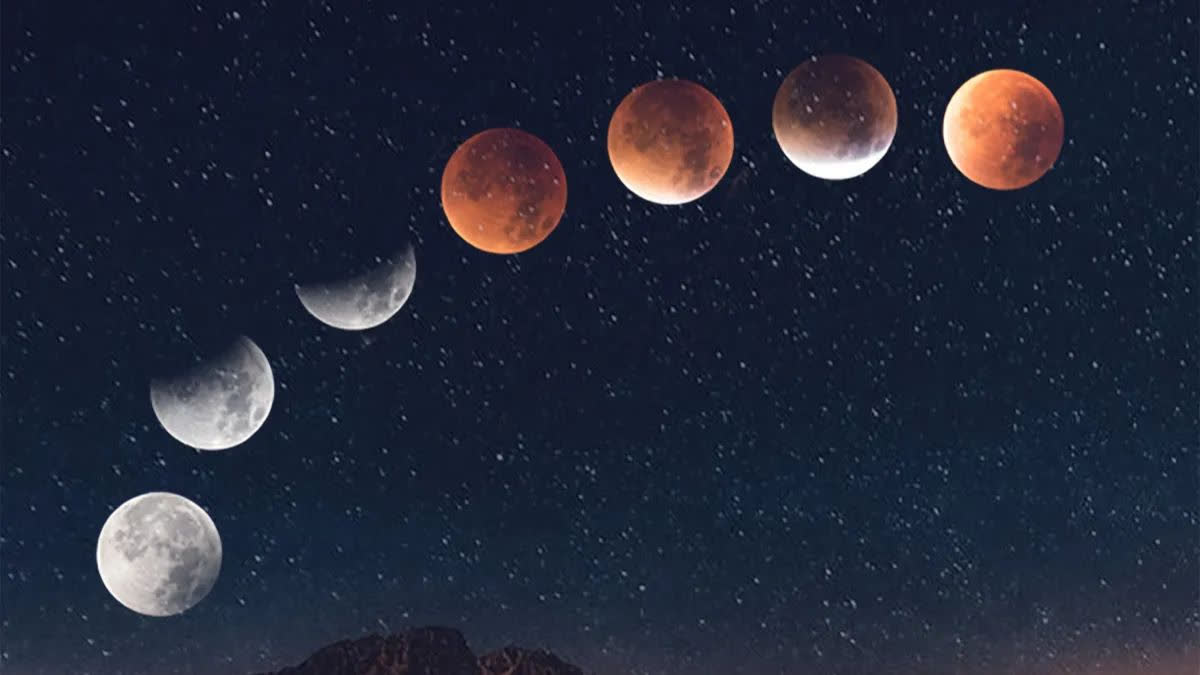Hyderabad: There will be four eclipses in 2025, which include two solar eclipses and two lunar eclipses, but India will be able to witness only one of these events, Rajendra Prakash Gupt, Superintendent of the Jiwaji Observatory in Ujjain said. Earlier, the same information was shared by the web portal 'time and date'.
Talking to news agency PTI, Dr Rajendra Prakash Gupt, Superintendent of the observatory, gave details of the upcoming eclipses and the location from where they can be observed. Let's dive into the details of these upcoming celestial events:
1) Total Lunar Eclipse in March: Not Visible From India
The first celestial event of 2025 will be a lunar eclipse, set to occur on March 14, 2025. The astronomical event will be a full lunar eclipse, but unfortunately, this event will take place during India's daytime, making it invisible to the Indian observers.
The occurrence of this lunar eclipse will be visible from regions like the USA, Western Europe, Western Africa, and over the North and South Atlantic Ocean; Gupt explained as per PTI.
2) Partial Solar Eclipse from March: Not Visible From India
After the first total lunar eclipse, the world will witness a partial solar eclipse later in March slated for the 29th of the month. This will also be missed by the Indian observers as it will occur during daytime in India.
The partial solar eclipse will be visible in regions like North America, Greenland, Iceland, the North Atlantic Ocean, Europe, and north-western Russia, said Gupt.
3) Total Lunar Eclipse from September: Visible in India
India observers can witness the total lunar eclipse on September 7-8, 2025. It will be visible from 8:58 PM to 2:25 AM, and the moon will be seen in a deep red hue shade. Gupt explained that the astronomical event would be visible in Europe, Antarctica, the Western Pacific Ocean, Australia, the Indian Ocean regions, India, and other countries of Asia.
4) Partial Solar Eclipse in September: Not Visible From India
The final astronomical event will be a partial solar eclipse, set to occur on September 21-22, 2025, and will not be visible in India. The occurrence of the full solar eclipse can be observed in countries like New Zealand, Eastern Melanesia, Southern Polynesia, and West Antarctica, added Gupt.
Other astronomical events in 2025
Apart from the Full lunar eclipse, Indian observers will witness three major meteor showers, starting with the Quadrantids happening on January 3-4, 2025. There will be 80-120 meteors per hour which will illuminate the night sky during the occurrence of the Quadrantids. Another meteor shower will be the Perseids, which will be visible on August 12-13, 2025. This meteor shower will offer up to 100 meteors per hour, whereas the Geminids on December 14-15, 2025, promises to showcase 150 meteors per hour. There is no requirement for special equipment to view these meteor showers.
Furthermore, the skies will grace with three supermoons on October 7, November 5, and December 5, 2025. These three supermoons will appear larger and brighter than usual, providing a magnificent view.
The rare Mars Opposition is an astronomical event that brings the red planet closer to Earth and occurs every 2 years and 50 days. Indian observers can view this celestial event on January 16, 2025. Meanwhile, the Pink Micromoon will occur on April 13, 2025, combining a full moon with its farthest distance from Earth, creating a unique celestial phenomenon.



